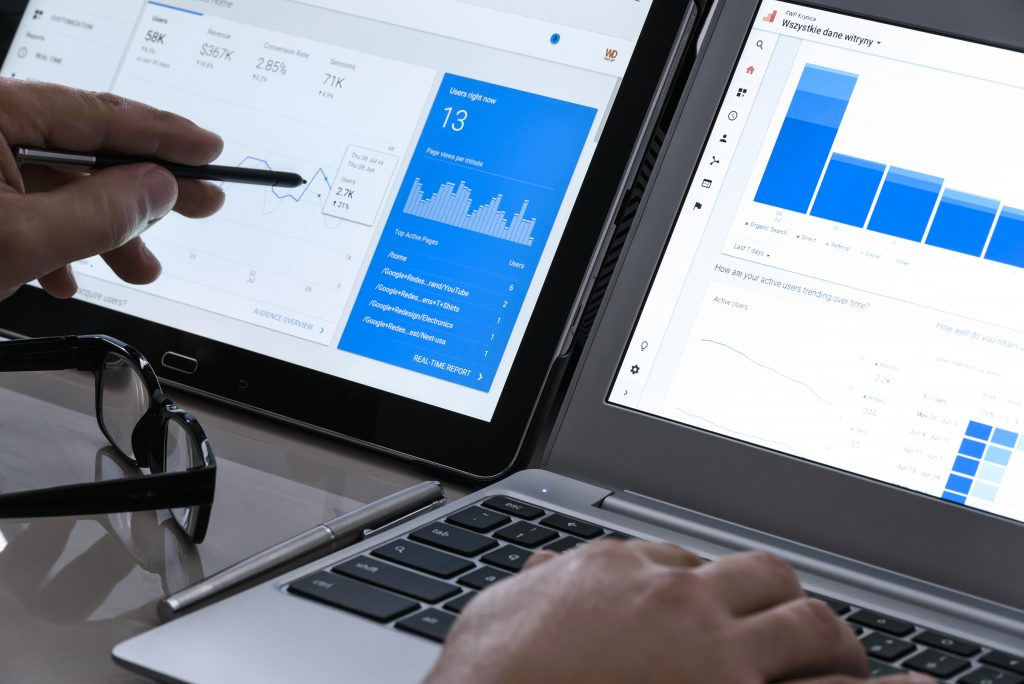2020 has been a tumultuous, yet interesting year all round. For most industries, it has been incredibly disruptive on business, while others, like the eCommerce industry, have thrived. If you had a successful online business, which has continued through COVID-19, or whether you have undertaken a new digital business during this time, you might be looking for some pointers.
Statistics show that online retailers have gone through unprecedented surges in site traffic and sales from the beginning of the year. Not only have lockdowns and isolation forced people to shop online, but they have stayed there too, even with restrictions lifting. Products like vapes have seen a massive spike in online sales, with consumers increasingly turning to niche eCommerce stores to find the latest devices and flavors. Globally, retail website visits soared from 16 billion visits in January 2020 to over 22 billion visits in June. This is a monumental jump in only a few months, and experts claim that this has created a general shift in consumer behavior.
So, if you are looking to expand your business, and take advantage of the digital wave sweeping through eCommerce, now is your chance. We unpacked some of our key advice in growing your eCommerce store.
Automate Your Process With the Right Tools

Let’s face it, running a business is a full-time job. In fact, it is several full-time jobs rolled into one. This is why the first thing we suggest is automating as much as possible of your business so that you can keep the focus on the more important things.
Luckily for you, there are a plethora of online tools to help you streamline various processes on your site. Many of them are either incredibly affordable or even free, and they take the heavy-duty processes off your hands.
Take a look at social media posting for example, there are various platforms that allow you to schedule your posts across your social platforms ahead of time for them to go out automatically.
As a clothing retailer, you will know how time-consuming your apparel management can be too. From storage, to order and supply chain management, there are incredibly detailed processes that can be automated with the right software.
Take, for example, if you are looking for an ordered garment in your warehouse to be dispatched. The software will allow you to pinpoint where to find the product in your warehouse and streamline the process of getting the product to your customer’s door. Incorporating a cutting-edge WMS module into your warehouse management system can revolutionize the way you track and manage inventory.
If you are a newcomer in the apparel business or you’re in need of advice on apparel management, then you’ll find this guide incredibly helpful.
But remember, everyone in the apparel business needs a tool like Kiwi Sizing for WooCommerce. Using this tool, businesses increase conversions and lower returns by helping customers find the right product size.
How is this possible? It’s possible thanks to professional size charts and a fit recommender. A store of any type can create custom-made size charts for products and thus stop unnecessary customer service calls. Definitely a tool worth using.
Be Savvy About Your Ad Strategies

Digital marketing is certainly one of the quickest evolving aspects of eCommerce. What works today might not work the next. Platforms such as Google and Facebook have regular updates and there always seems to be a new feature that you can make use of. This is great, but it can be tricky to keep up with the constant changes.
We highly advise that you spend some time learning the ins and outs of paid advertising, whether it be on Facebook, or by taking advantage of free Google advertising tools. Test different types of ads, play around with the audiences, adjust your spending, and work out whether pay-per-click works for you, or whether pay-per-engagement is better.
Use the tools, as well as Google Analytics to monitor the success of each ad. You can track how many clicks you received, how many leads were converted, how much traffic came to your site from the ad, and how the traffic flowed. With this information, you keep adjusting your ad strategies until you get it right.
If you run a niche online store—such as an RC shop selling remote-controlled cars and accessories—you’ll need to focus on targeting a passionate audience. Using highly specific keywords and ad placements in hobbyist forums and communities can help drive engaged traffic that is more likely to convert.
Focus On Your SEO

If SEO hasn’t been your priority thus far, now is the time to start refocusing your energy. Did you know that organic traffic makes up 53% of all traffic to your site! This is traffic coming into your site from Google searches and where your site is ranked. 81% of all people first search for a product or service before making a purchase, so you will want your site ranking high.
The first thing to look at is your keyword research and what your keywords are looking like on your site. If you are not including relevant keywords on your landing pages, as well as in your blogs and articles, you will find yourself slipping further and further down the search page.
Remember, Google regularly scrapes your site to ascertain where to place you. It will pick up repeated keywords and know where you should be ranked. Avoid stuffing your content, and get rid of any duplicate or 404 pages. These will hinder all of your SEO work.
It is highly advisable to conduct regular SEO audits on your site. Check your image sizes, update your content, and work on your meta descriptions. Remember, every time you make a change on a page, Google will re-scrape your site and re-rank you. So, if there is something trending, or if you can update some information, do so, you might find yourself higher.
Optimize Your Sales Funnel

Lastly, take a look at your sales funnel from your customer’s perspective. Go through the full sales process from entry to exit to ascertain how easy the process is, which steps take the longest, what can be improved upon, and what the communication process was like throughout the process.
Take your product page, for example. Does it have the right content and descriptions on it to convert your customer? Remember, you are not selling to someone who can see and touch the product. The descriptions will need to be simple, yet packed with the right information. They will also need to be SEO optimized for the product to pop up in search.
Don’t forget to look at your forms. How many forms does your customer need to fill out and how complicated is the process? If there are too many things to fill out, and the process takes too long, you will most certainly have an abandoned cart. If the customer does bounce and leave a full cart, do you have an email ready to automatically go out to them reminding them about their purchase, and incentivizing them to complete it?
There are hundreds of things that you can tweak and optimize in the funnel, so spend some time getting to know what your customer wants.
Wrapping Up
Creating and managing an online store is a continuous learning curve. You will need to remain on top of trends, changes, and movement in the industry to keep up with your customer’s desires. As mentioned, once you master one aspect of your digital marketing efforts, like your social posting, automate the process to lighten your workload. This will allow you to work on scaling your business with new techniques and processes that are constantly evolving in the market.
It is important to keep testing and monitoring the changes that you make to your site. You might think it is a successful upgrade but it may fall flat with your customer. Keep an eye on your traffic and the movements on your site at all times and don’t be afraid to try new things.

Comments are closed.